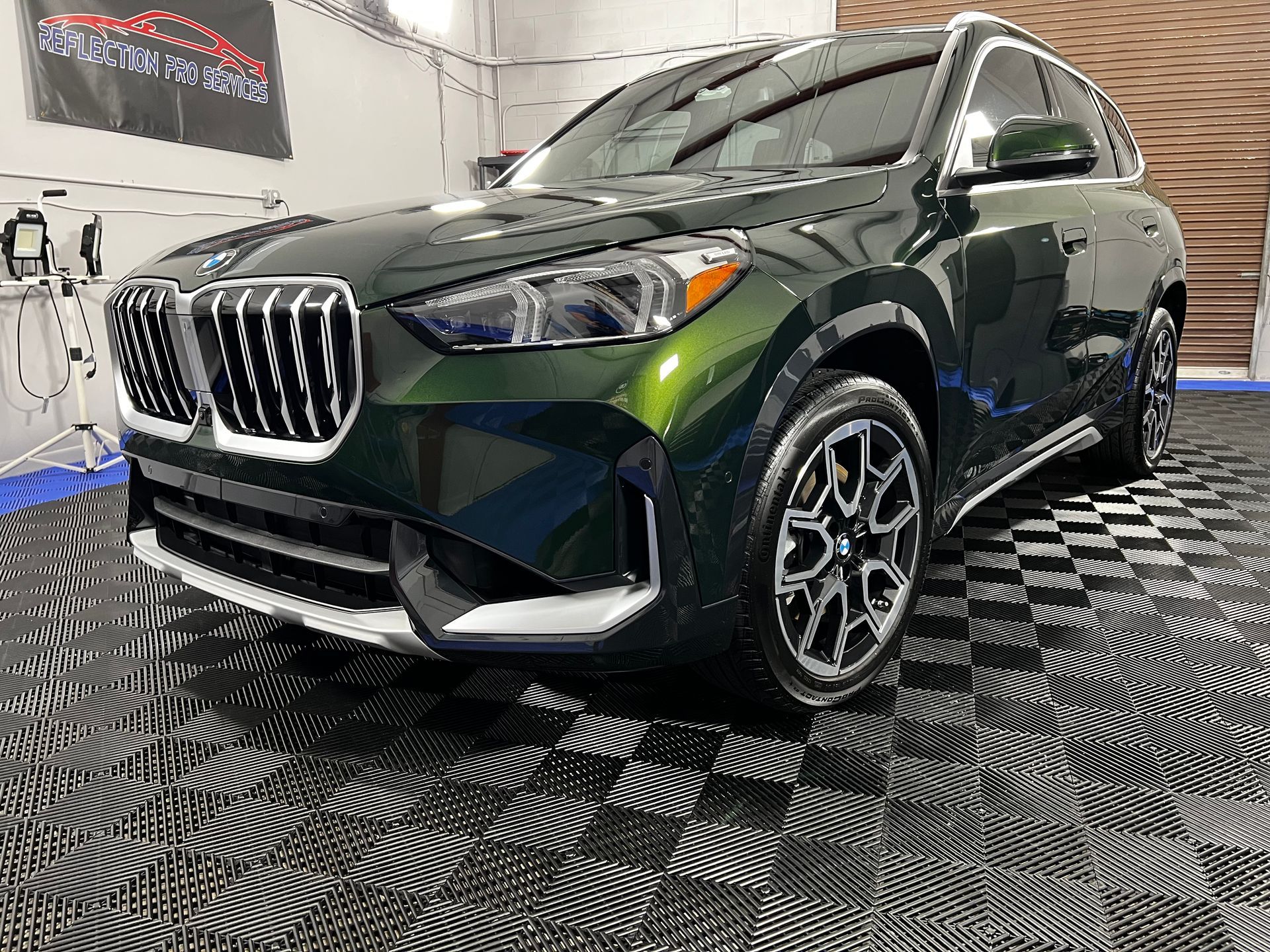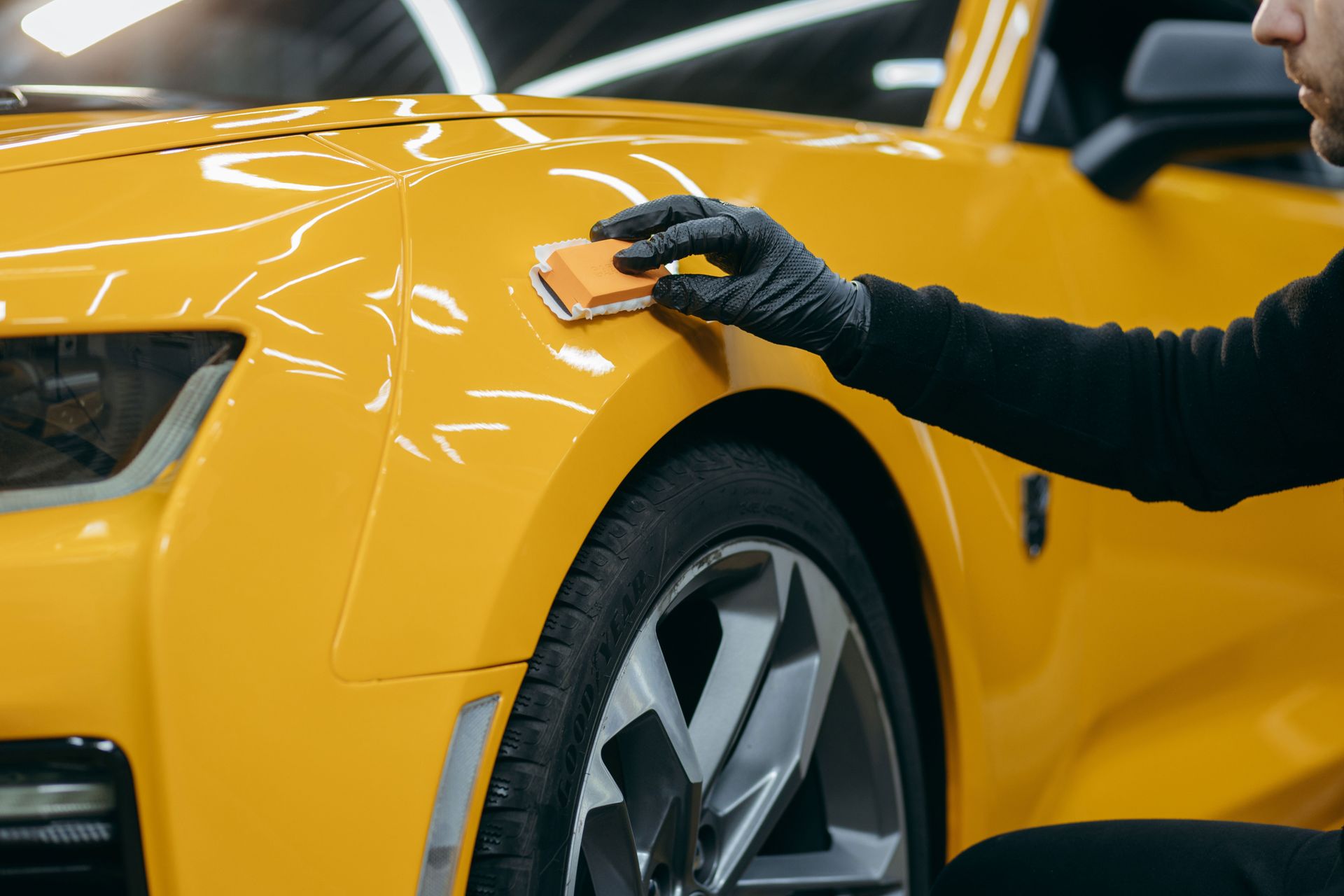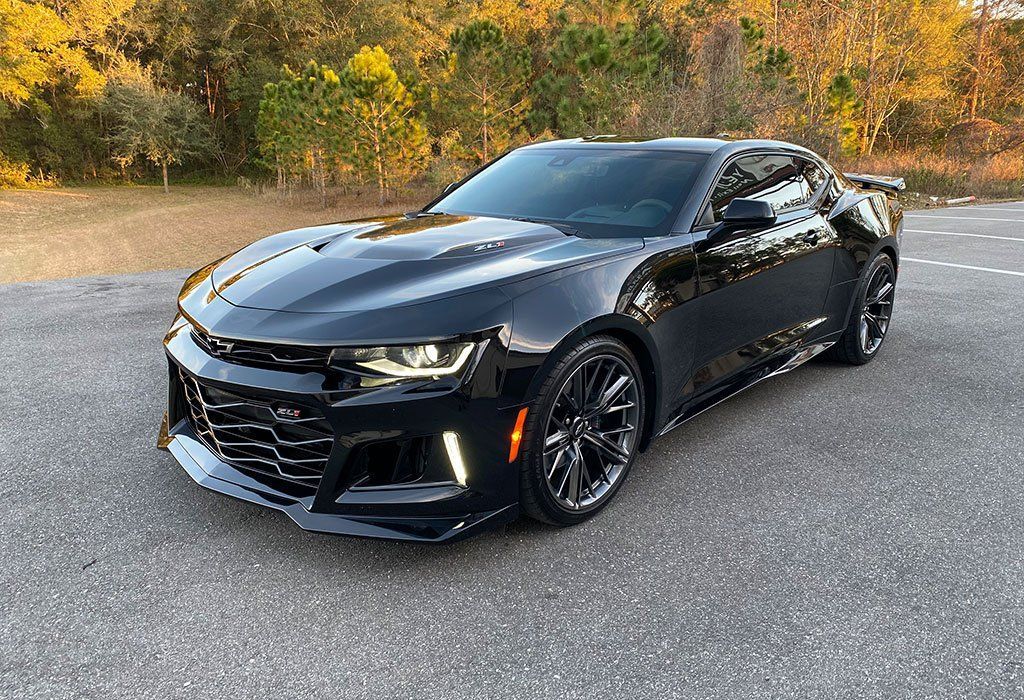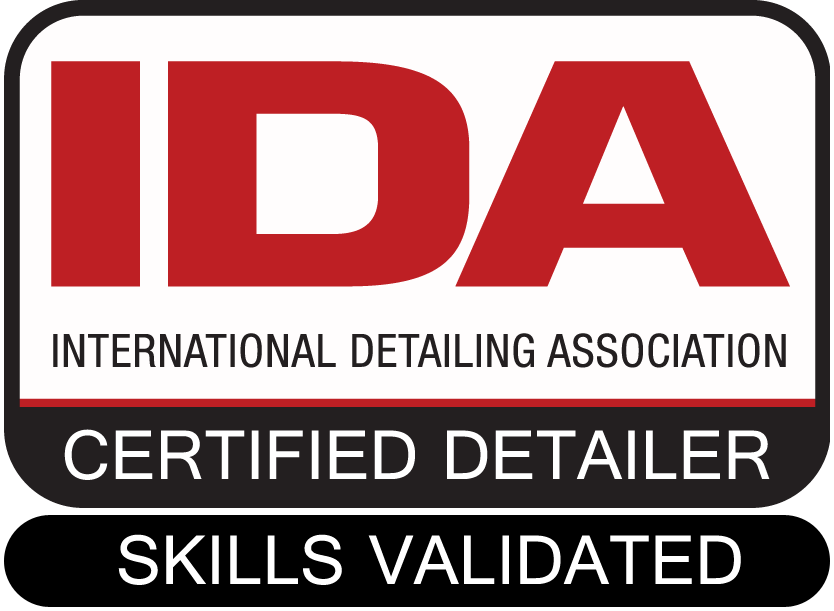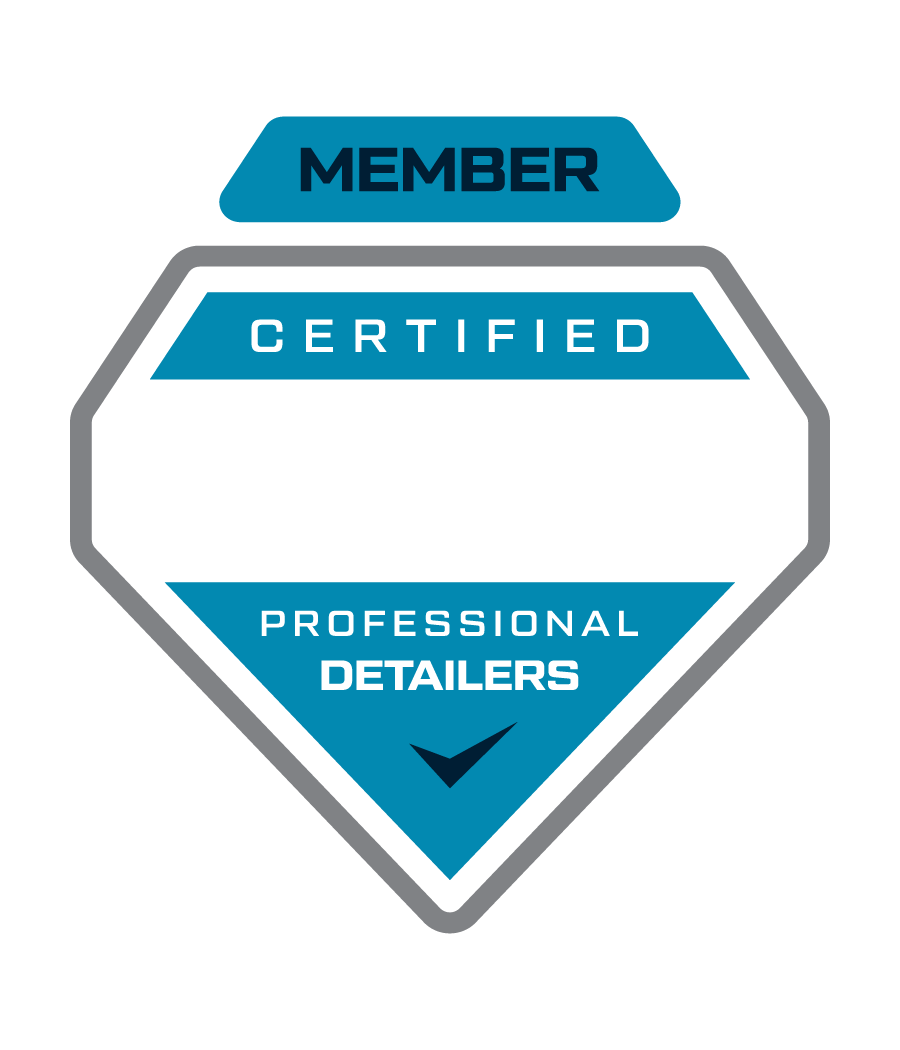How Ceramic Coatings Repel Dirt and Water: Enhance Surface Durability
When it comes to keeping our cars looking fresh and clean, we often find ourselves battling dirt, grime, and the elements every weekend. You may have even wished for a magic shield that could repel water and muck while letting your car maintain that showroom shine. Enter ceramic coatings—a revolutionary solution that not only protects surfaces but also makes them easier to care for. Think of it as armor for your vehicle's paint: a very strong yet lightweight layer that works tirelessly to fend off nature's nastiest foes. In this article, we'll dive into how these advanced coatings operate, what makes them so effective, and why they're becoming the go-to choice for car enthusiasts and everyday drivers alike.
Ceramic coatingsrepel dirt and water through their hydrophobic properties, which arise from the molecular structure of silicon dioxide (SiO₂) and titanium dioxide (TiO₂). This structure creates a smooth surface that encourages water to bead up and roll off, taking dirt and contaminants with it, thus minimizing the need for frequent cleaning.
The Science Behind Ceramic Coatings
At the heart of ceramic coatings is nanotechnology, an impressive field that focuses on manipulating matter at a microscopic level. This process allows for the creation of remarkably small particles that can penetrate and fill in even the tiniest gaps and pores on a vehicle's surface. Think of it like a tailored suit for your car's paint; it fits perfectly and shields what's beneath while offering flexibility and durability.
Understanding Nanotechnology
Nanotechnology involves working with materials on an atomic and molecular scale, producing substances that significantly enhance performance characteristics. For ceramic coatings, using materials like silicon dioxide (SiO₂) and titanium dioxide (TiO₂) results in strong chemical bonds that create a layered barrier against the elements. These specially engineered particles are not just sprinkled on; they are meticulously bonded to the vehicle's paint. Once applied, these particles amalgamate to form a sacrificial layer that protects your car's surface from environmental contaminants like grime, bird droppings, or tree sap. It's similar to putting on sunscreen before spending hours in the sun; by doing so, you're actively protecting your skin from UV damage and pollutants.
Silicon dioxide creates a hard, protective layer that resists impacts, while titanium dioxide adds UV resistance, helping prevent fading and discoloration from sunlight exposure. The silicon-oxygen bonds formed during this process are especially significant; they create a hydrophobic surface effect that repels water. Picture this: when raindrops hit your ceramic-coated vehicle, instead of clinging desperately to the paint, they bead up and roll away, carrying dirt along with them. This not only enhances cleanliness but also means you won't have to wash your car as often—an attractive feature for any busy car owner!
Hydrophobic Properties Explained
At the heart of ceramic coatings is their impressive hydrophobic nature—the ability to repel water. This unique characteristic arises from a specially engineered molecular structure that forms strong silicon-oxygen bonds, creating a protective layer on your vehicle's surface. When water interacts with this coating, it doesn't stick; instead, it beads up and rolls off, taking dirt and other contaminants with it. This remarkable feature is akin to how water rolls off a freshly waxed car, but there's so much more at play here when it comes to durability.
The Molecular Structure
The hydrophobic property of ceramic coatings can be attributed to their intricate design at the molecular level. The combination of silicon dioxide (SiO₂) and titanium dioxide (TiO₂) within the coating establishes a highly structured matrix that presents a formidable barrier against liquid. This arrangement not only deflects water but also minimizes its adhesion to the surface, allowing droplets to bead as if on a finely polished surface. To visualize this, think about the last time you spilled water on a non-stick frying pan: it simply rolls around without soaking in. That's exactly what happens when your vehicle is coated with ceramics; it repels the liquid effectively due to its low surface energy. The contact angle of water on well-applied ceramic surfaces can exceed 100 degrees, showcasing just how effective these coatings truly are.
This water-repellent property not only makes cleaning easier but also helps maintain the vehicle's aesthetic appeal. With greatly reduced need for frequent washing, ceramic coatings facilitate ease of maintenance—making them incredibly appealing for those with busy lifestyles or those who desire lower-maintenance options. More than just convenience, this unique feature safeguards your vehicle's paintwork from environmental contaminants like bird droppings and tree sap, which can etch or stain over time if left untreated.
Dirt-Repellent Qualities
The magic of ceramic coatings lies in their innovative design, which not only makes surfaces sleek and shiny but also transforms how dirt interacts with these surfaces. This transformation occurs due to the unique molecular structure of ceramic coatings and their self-cleaning effect. When applied, these coatings create a smooth layer that prevents dirt from easily adhering.
The Self-Cleaning Effect
What this means in practical terms is that as water hits the surface of a vehicle treated with a ceramic coating, it doesn't just pool or slide off—it forms beads. These beads roll off seamlessly, taking with them dirt and dust particles that would otherwise cling stubbornly to the paintwork. Imagine it like a natural cleaning service on your vehicle—rain becomes an ally rather than an enemy! By effectively washing away contaminants, ceramic coatings significantly reduce how often you need to manually wash your car.
The reduced frequency of washing leads to fewer opportunities for damage caused by abrasive dirt particles during traditional cleaning methods. Regular touching and rubbing while cleaning a vehicle can lead to paint deterioration over time, which is why having a surface where dirt doesn't adhere dramatically cuts down on wear and tear. Additionally, the environmental protection offered by these coatings cannot be overstated. Ceramic coatings act as shields against contaminants like bird droppings or tree sap that can adversely affect paint finishes if left unattended. By preventing these substances from settling into the paintwork, you're not only enforcing cleanliness but also prolonging your vehicle's aesthetic charm and resale value.
Enhanced Surface Protection
Ceramic coatings go beyond just making your vehicle look shiny; they create a formidable shield against various environmental threats. Imagine this protective layer as an invisible force field that actively keeps harsh elements at bay. Factors like bird droppings or tree sap can wreak havoc on traditional paint finishes, leading to unsightly blemishes and costly repairs. With ceramic coatings, these dangers are effectively minimized, allowing you to enjoy your vehicle without constantly worrying about damage.
Take, for example, UV rays, notorious for their long-term effects on painted surfaces—they accelerate oxidation and lead to fading over time. However, the application of a ceramic coating serves as a safeguard against this damage. It reflects these harmful rays and prevents the paint from becoming dull and lifeless.
Chemical Resistance
One standout feature of ceramics is their remarkable resistance to various chemicals. Day-to-day experiences expose your vehicle to numerous substances—think about gasoline spills at the pump or road salt during winter months. These chemicals can etch traditional paint surfaces, potentially causing irreversible damage. However, when coated with ceramic protection, your vehicle's exterior becomes resilient enough to withstand these attacks while maintaining its pristine appearance.
A good-quality ceramic coating bonds with the vehicle's surface on a molecular level, creating a lasting barrier that is difficult for contaminants to penetrate. Grime from the road simply beads up and rolls off the surface instead of clinging stubbornly to it. Additionally, regular cleaning after applying a ceramic coat becomes significantly easier. You won't need heavy-duty cleaners or aggressive tools to remove harsh dirt; gentle washing becomes sufficient to keep everything in check.
Longevity of Protection
One major benefit of ceramic coatings lies in their durability compared to traditional waxes or sealants. While traditional products may offer protection that lasts only weeks or months, professional-grade ceramic coatings can endure for several years when applied correctly. They withstand weathering from not just rain and snow but even extreme heat. The investment in such long-term solutions pays dividends, as you are less likely to require frequent reapplications.
Advantages Over Traditional Wax
Traditional waxing has certainly charmed car enthusiasts over the years with its history and tactile experience. However, the evolution of automotive care has brought forward ceramic coatings, which represent a quantum leap forward in vehicle protection. The most noticeable advantage lies in longevity. While traditional wax typically offers a protective layer lasting just a few months, a well-applied ceramic coating can endure for five years or even longer depending on the conditions and maintenance habits. This extended lifespan means less frequent reapplication costs and time spent maintaining that mirror-like gloss finish.
Moving on to performance, ceramic coatings once again hold strong advantages over waxes. Many traditional wax products start to break down in high heat or direct sunlight. In contrast, ceramics are engineered to withstand temperatures exceeding 1,200°F without melting away or degrading. This resilience makes them particularly effective in an array of climates—whether you're navigating through scorching summer days or battling cold winters filled with salt on icy roads. Furthermore, ceramic coatings excel at preventing damage from environmental factors such as UV rays, bird droppings, tree sap, and road grime that can etch and harm paint if left untreated. This feature keeps vehicles looking showroom-fresh while reducing overall cleaning efforts because contaminants can't cling as easily to these surfaces.
Proper Application Techniques
Applying ceramic coatings correctly is essential—this step could mean the difference between a flawless finish and a disappointing result. It all begins with preparation, which sets the foundation for a successful application. Start by giving your vehicle a thorough wash, removing any dirt and grime that could interfere with adhesion. Use a high-quality car wash soap instead of household cleaners, as these are specifically designed to lift dirt without leaving residues. After washing, dry your car completely using microfiber towels, as water spots can complicate the process ahead.
Preparation Steps
Next, it's time for decontamination. Even after washing, you may find lingering impurities on your paint that aren't visible at first glance. A clay bar works by gently grabbing onto stubborn particles such as tree sap or industrial fallout that remains on the surface. Simply glide it over lubricated sections of your paint to remove these contaminants. Once you've removed all contaminants, it's wise to polish the paint. Polishing enhances the reflective quality of the surface, allowing more depth and luster after applying your ceramic coating. Make sure to use a polishing compound suited for your vehicle's paint type and finish this step before proceeding with application. Don't overlook another important factor—the environment where you're working. It's vital to apply the coating in a dust-free environment, ideally within a climate-controlled setting that maintains temperatures between 65°F and 75°F. This helps ensure optimal bonding conditions and reduces the chances of dust settling on the wet coating.
Application Process
When applying the ceramic coating, precision is key. Use a high-quality microfiber cloth or applicator pad, and work in small sections—this will help you manage time effectively and minimize mistakes. Apply an even layer using straight motions rather than circular ones, as this promotes uniformity throughout your application. After you've coated each section, allow it to cure for a specified time before buffing it off with a clean microfiber cloth. This curing phase might range from one to three minutes depending on guidelines given by your specific product, so be sure to follow those instructions closely.
Maintaining Ceramic-Coated Surfaces
Maintaining a ceramic-coated surface might initially seem like an extra chore, but it truly pays off in the long run. Regular care not only keeps your car looking spectacular but also ensures the hydrophobic properties of the coating remain effective. One of the best practices is to wash your vehicle with pH-neutral shampoos designed for coated surfaces. These gentle cleansers won't strip away the protective layer that you've invested in, making them ideal for maintaining that just-applied shine. It's wise to avoid automatic car washes; they can be harsh on the coating and often use aggressive detergents that wear down its protective attributes. Instead, hand washing allows you to control product use and how thoroughly each area is treated.
Use soft microfiber cloths while drying to prevent any surface damage. Apply a maintenance spray every two to three months to refresh the coating and help restore its hydrophobic qualities, allowing water to bead off beautifully again. Ultimately, it's all about creating a habit of care around your ceramic-coated surfaces. When you nurture and maintain them thoughtfully, you'll find they last longer and perform better. It's not just a product; it's an investment into preserving the aesthetic beauty and durability of your vehicle over time.
Unmatched Ceramic Coating Services in Ocala, FL
At Reflection Pro Services, we bring out the best in your vehicle with our
premium ceramic coating services in Ocala, FL. Designed to deliver lasting shine and unmatched defense, our coatings protect against UV rays, dirt, and environmental damage while giving your car a sleek, polished finish. Make maintenance easier and keep your vehicle looking its finest—book your ceramic coating service
with our experts today and enjoy protection that lasts!
Reflection Pro Services and Owners Pride endorsed by CARFAX
Reflection Pro Services and Owners Pride companies are now that is endorsed by CarFax. When ever we perform any of our ceramic coating services, it is registered with CarFax. You will now have a positive report on your CarFax history. This is just another benefit of having Reflection Pro Services Provide your services.

Book an Appointment
If you have any questions or would like to just learn more about coatings, please feel free to give me a call, email, or fill out my book an appointment and we can discuss your questions and concerns.



